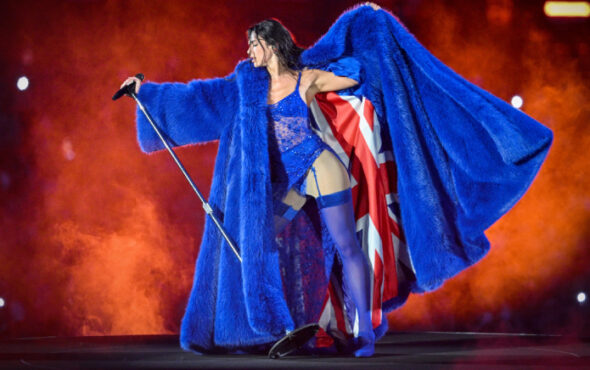
“In our culture, looking androgynous is often interpreted as looking white, thin, hairless and having neutral gendered body parts,” says LA-based activist, educator and LGBTQIA+ advocate Addison Rose Vincent. “Well, for many non-binary people that image simply doesn’t work.”
Addison would know. As a gender nonconforming person, they don’t conform to any preconceived notions of how a non-binary person should present themselves. It’s why they have teamed up with GAY TIMES and Hinge to address the misconceptions non-binary people face.
As the founder and CEO of Break the Binary, a consulting firm which provides DEI and LGBTQIA+ training and supportive services to organisations, schools and businesses, Addison is using their platform to normalise the variety of LGBTQIA+ experiences and identities.
In celebration of Non-Binary Awareness Day, Addison shared their answers to the Hinge NFAQ (Not-so Frequently Asked Question): “Does being non-binary mean looking androgynous?”
First things first, Addison says there is no one way to be non-binary. “Non-binary people come in all shapes, forms and expressions,” they explain. “But there’s an expectation that non-binary people owe you androgyny.”
So why do people think being non-binary means looking androgynous?
As with any marginalised identity, there are a lot of preconceived notions about non-binary people and how they present themselves, including that being non-binary means being androgynous.
“This stems from binary expectations that women owe you femininity and men owe you masculinity,” explains Addison. “But isn’t that pretty limiting?”
It is indeed. It also misconstrues what it means to be non-binary. This is because non-binary is actually an umbrella term for anyone whose gender identity doesn’t comfortably fit the binary of man or woman.
This means that while someone might identify as non-binary, their identity doesn’t necessarily fit some preconceived sense of gender expression. For example, non-binary people might feel like their gender is fluid, sits somewhere between being a man and a woman, or completely rejects the notion of gender completely.
There are other considerations, too, such as access to resources. As Addison says, not all non-binary people will be able to remove hair and gendered body parts. “And more importantly,” they add, “we shouldn’t feel pressured to.”
How does this affect dating as a non-binary person?
Dating can be daunting no matter your gender identity or sexuality. And when there are preconceived notions about who you are and how you should present yourself, this makes things even more difficult. In fact, around half of non-binary Hinge daters have never had a queer dating experience because they’re not sure how to approach a romantic interest.
One of the reasons this could be the case is because of assumptions people might have about someone’s gender expression and identity.
However, know that communication is key. It ensures that whoever you might be dating will embrace you for who you are. “Whether you are androgynous, masculine, feminine, or some form of gender nonconforming like me, you’re still non-binary and you’re still valid,” says Addison.
To find out more, watch Addison’s full answer to the NFAQ in the TikTok below. And if you have a NFAQ about dating as a non-binary person, you can submit your own question in the TikTok comments for Addison to answer.
80% of LGBTQIA+ daters on Hinge have struggled to find answers to their questions about relationships, self-discovery, gender, and sexuality. See what other inspiring voices like Addison have had to say at hinge.nfaq.co and submit your own.



